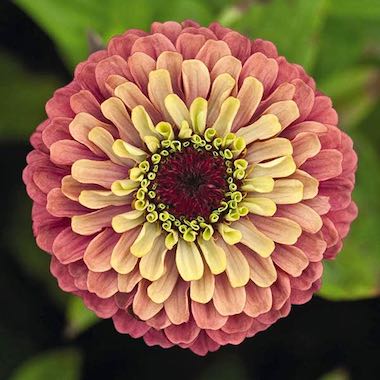Cosmos Seeds
a.k.a. Mexican aster
Cosmos bipinnatus, C. sulphureus
How to plant Cosmos seedsReasons why you'll love growing cosmos:
- Cosmos are easy to start from seed, and will often self-sow.
- Plants are easy to grow and maintain. Cosmos will grow in hot sun and poor soil, and will withstand drought conditions.
- Cosmos are beautiful and diverse. Flowers come in an amazing variety of bright colors and unique styles. Plants grow as 12-inch dwarfs, 4-foot giants, and many sizes in between.
- Flowers attract beautiful friends to our gardens: birds, bees, and butterflies love cosmos.
- Cosmos look good most anywhere. In containers, flower beds and borders, or as cut flowers in your home.
Cosmos for Backgrounds & Cut Flowers
Tall Cosmos with long, strong stems.
Double Click Series
Cosmos bipinnatus
Double Click series cosmos are free-blooming, 4 ft. tall flower machines from early summer until frost. The impressive large and frilly, semi-double to fully double flowers are excellent for cutting.
Sensation Type
Cosmos bipinnatus
Large 3-4 in. daisies with yellow centers bloom in summer and fall. Heavy-blooming, self-cleaning 3-5 ft. tall plants.
Psyche Series
Cosmos bipinnatus
Psyche series cosmos produce semi-double and single, 3-4 in. frilled and scalloped flowers with golden eyes. Plants grow to 4-5 ft. tall. We have become fans of Psyche series cosmos for their outstanding performance in our test garden.
Versailles Series
Cosmos bipinnatus
Tall 3-4 ft. tall plants produce a wealth of 4 in. wide blooms on long, strong stems. Versailles cosmos are superb cut flowers.
Dwarf Cosmos
Smaller Growing Cosmos for Bedding and Containers.
Pop Socks Series
Cosmos bipinnatus
Pop Socks series cosmos produce marvelous single, semi-double, and anemone-shaped flowers throughout the season. Pop Socks cosmos grow 24-28 in. tall.
Sonata Series
Cosmos bipinnatus
Heavy-blooming, 2 ft. tall plants with large 3 in. flowers with gently frilled petal tips. Plants bloom from late spring into early autumn. Use the well-shaped plants of Sonata series cosmos to edge paths, mass in beds, blend into borders, or plant in containers.
Cosimo Series
Cosmos bipinnatus
Flowering in as little as 8-12 weeks from seed, the Cosimo series is one of the first cosmos to come into bloom. The heavy-flowering, 18-24 in. tall bushy and compact plants produce impressive masses of blooms. Flowers are excellent for cutting. Use Cosimo cosmos in garden beds or containers, where plants will bloom all summer long.
Apollo Series
Cosmos bipinnatus
The large, ruffled 4 in. blooms of Apollo series cosmos have an overlapping petal arrangement. The result is rounder, tidier, and longer-lasting flowers. The dwarf, 18-26 in. tall plants are bushy and branch freely. Apollo series cosmos excel in heat tolerance and disease resistance.
Sulphur Cosmos
Cosmos sulphureus
Tall or dwarf summer blooming annuals. Flowers are in highly combustible shades of orange, yellow, or scarlet red.
Dr. Allan Armitage discusses Cosmos bipinnatus.
How to Plant and Grow Cosmos

Sow Cosmos: Sow seeds in cell packs or flats, press into soil and lightly cover, 4 to 6 weeks before transplanting into the garden. When kept at 70 to 85° F., germination is in 7 to 21 days. Can direct sow cosmos seeds into prepared seed beds, up to ⅛ inch deep, after all danger of frost has passed. Sow 4-6 seeds per foot. Thin seedlings to 12 to 15 inches apart.
Grow Cosmos: Full sun. Best flower production is in soils of average fertility with moderate water. Cosmos tolerate heat, drought, and poor soil. Remove spent blooms to promote additional flowers. Cosmos will usually self-sow if some spent blossoms are kept on plants. Cut flowers typically last 5 to 9 days when blooms are cut as petals unfold. Flowers fully open in vase. Cosmos attract birds, bees and butterflies and are rarely bothered by pests or disease.
Dig Deeper: Tip to bring your cosmos plants into bloom up to 3 weeks earlier when growing under fluorescent lights: once seedlings have emerged provide 11 hours per day of artificial light. Keep seedlings in complete darkness for the remaining 13 hours. After 2 weeks, keep the lights on for 14 or more hours per day.










